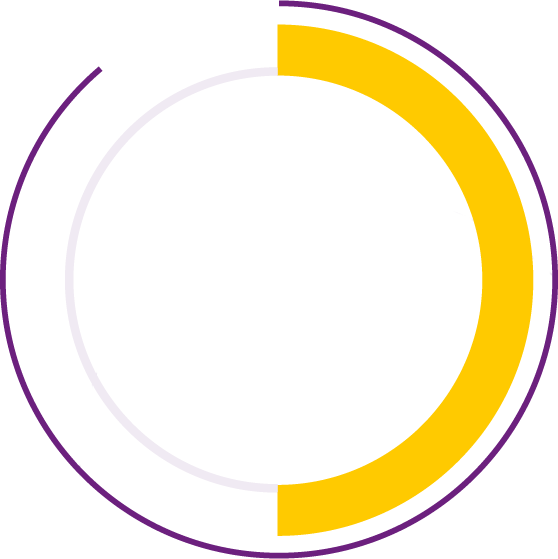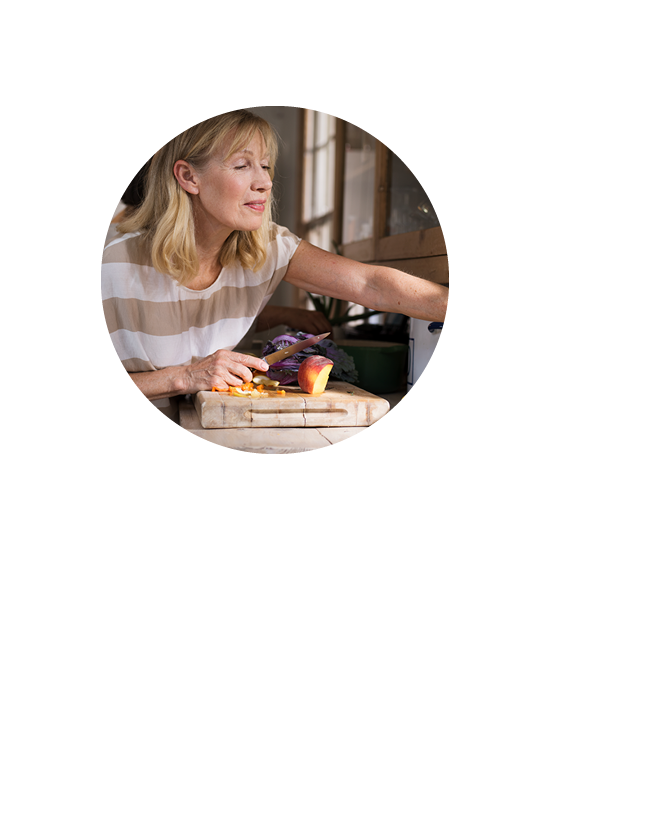
Overactive bladder could be impacting a woman’s life
When compared to women without overactive bladder (OAB), women living with this condition may be less productive at work, less satisfied sexually, have higher rates of depressive symptoms and poorer mental health as well as worse quality of sleep.1





Overactive bladder in Australia
- OAB is fairly common, affecting between 12-17% of Australians and becomes increasingly common as people age.1,2
- OAB is more likely to be experienced by women who are post-menopausal, or who have given birth through vaginal delivery.1,2
- People who have a body mass index (BMI) higher than 30 or who experience chronic constipation may also have a higher risk for OAB.1,2
Having the conversation
Women may be embarrassed about experiencing the symptoms of overactive bladder. It can take several years for a patient to bring up their symptoms,3 meanwhile they are living a limited life – turning down social invitations, reducing physical activity, even struggling to perform at work.2
Starting the conversation can help ease their burden – patients prefer their doctor to bring up the topic.3 Consider including questions on continence as a regular part of your consultations to help break the ice.
When your bladder is functioning normally, it will expand like a balloon as it fills with urine.1 When you go to urinate, a muscle in your bladder called the detrusor muscle will contract, which causes the bladder to empty.1 The most common cause of OAB (Overactive Bladder) is overactivity of the detrusor muscle, which causes it to contract involuntarily and creates the urge to urinate.1
Unfortunately, there is no cure for OAB. Therefore, the goal of treatment is to manage symptoms in the short and long-term.1 The primary recommended treatment for OAB includes lifestyle changes, which can include pelvic floor exercises and bladder training aimed at improving your bladder control.1,2 These lifestyle changes can be quite an effective treatment. If this is not enough to control OAB, there are also medications available which can help manage symptoms.1,2 These medications can have side effects, so before a doctor prescribes one, the benefits of a medication should be weighed against the risks for each individual patient. While it might feel embarrassing or awkward to discuss OAB with your doctor, support is available. It’s important to talk to your doctor to understand your options so you can get the best health outcome possible.
Some food and drinks that can irritate the bladder include caffeine, carbonated beverages, spicy food, artificial sweeteners, and alcohol.
Changes to your lifestyle may help to reduce your symptoms and can be easy to initiate. Some options to try are:1,2
- Reducing fluid intake to 6-8 glasses of water per day and avoiding fluids 2-3 hours before sleeping.
- Avoiding food and drinks that can irritate the bladder, including caffeine, carbonated beverages, spicy food, artificial sweeteners, and alcohol.
- Regulating your bowel movements to avoid constipation (e.g., using fibre supplements or stool softeners).
- Controlling any chronic health conditions, like hypertension, diabetes, sleep apnoea or obesity.
- Stopping smoking.
- Try to start strengthening the muscles around the bladder which include pelvic floor exercises and bladder control training.
Training your pelvic floor muscles can help you to interrupt a bladder muscle contraction, helping to reduce the urge to urinate and control urine leakages.1,2 It usually takes at least 3 months to see any benefit, so consistency and persistence is key.1 Below is an example of a training schedule, although pelvic floor muscle exercises are best guided by a trained nurse or physiotherapist:1
- To activate your pelvic floor muscles, squeeze the muscles around your thighs, bottom, and tummy as if trying to stop the flow of urine.
- Contract and relax for 2 seconds each, with 15 repetitions, 3 times per day.
- Increase the contractions and relaxations by 1 second per week, until you can do 10 second contractions and relaxations.
- Continue to do 10-second contractions and relaxations with 10 repetitions once a day – maintenance is essential for strength and effectiveness.
- Freeze & Squeeze1,2
Instead of rushing to the bathroom when you have the urge to urinate, stay still and hold your pelvic floor muscles for 10 seconds, or quickly and repeatedly tighten them until the urgency is gone. You can then proceed to the bathroom at a normal pace. - Bladder training
The aim of bladder training is to modify your bladder function by scheduling the times you urinate.1 To do this, you and your doctor choose the longest time interval with which you are comfortable not going to the toilet.1 You then start the day by emptying your bladder, and then urinate at every agreed time interval, and again before going to bed.1 Any urges to urinate before the right time are suppressed using techniques like distraction, relaxation or deep breathing.1 The time interval between urination is then gradually increased over time.1 Like pelvic floor exercises, bladder training needs consistency and persistence, with benefits seen around the 6-week mark.1
You do not have to suffer through OAB alone. The Australian Government Department of Health offers various services and information, including the National Continence Helpline and an extensive range of resources. Find out more at National Continence Helpline | Australian Government Department of Health or Bladder and bowel | Australian Government Department of Health
References:
- Arnold J, et al. Overactive bladder syndrome – management and treatment options. Aust Fam Physician. 2012;41(11):878-883.
- Willis-Gray MG, et al. Evaluation and management of overactive bladder: strategies for optimizing care. Res Rep Urol. 2016;8:113-122.
- Filipetto F, et al. The patient perspective on overactive bladder: a mixed-methods needs assessment. BMC Fam Pract 2014;15:96.
Our website content is intended to educate only and does not replace advice from your health care professional.
